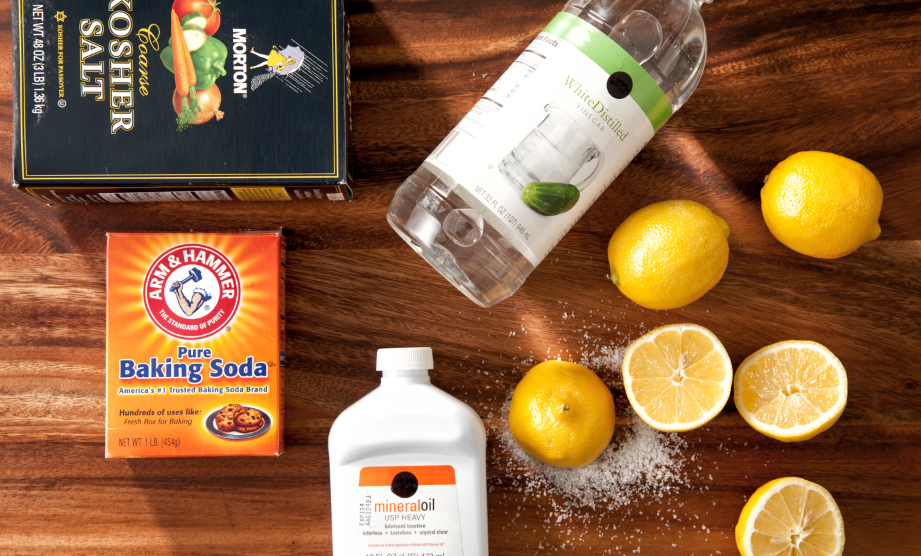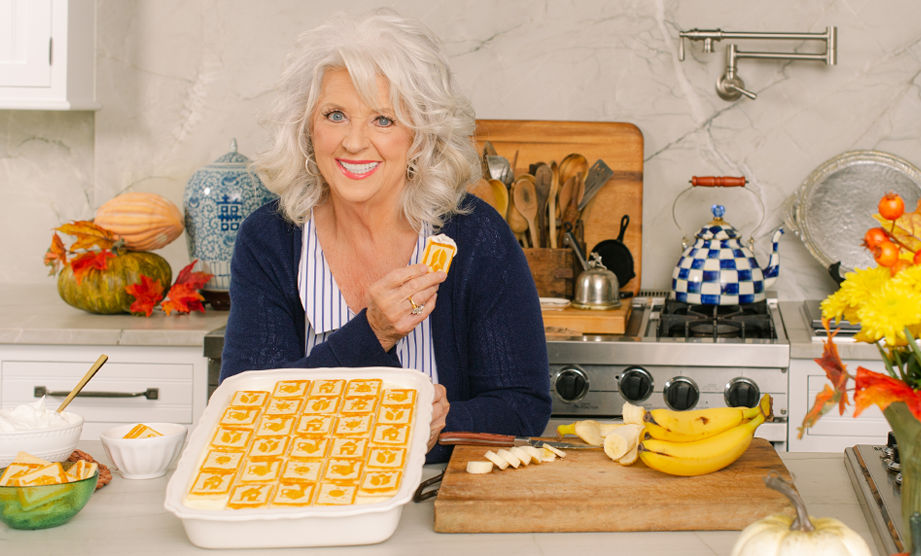Whether it is an antique butcher block or a $10 special from the local grocery store, a good wooden cutting board is worth its weight in gold. When cleaned properly, wooden cutting boards are as safe, if not safer, from bacteria than plastic or rubber boards. Intimidated by cleaning your cutting board? Don’t be! Here are some quick, easy cleaning tips with supplies you already have in your pantry.
Basic Clean
The first line of defense is a standard sponge with soapy water. As soon as you finish using your board, wash down the surface with hot soapy water. Be careful not to submerge boards in dishwater. Submerging could spread bacteria in your dishwater and cause your board to warp or split. Dry off with a clean towel, and store your board in a dry spot, preferably standing up with room to further air dry. Always allow your board to dry completely.
Pesky Stains
If you have persistent stains—chopping herbs often leads to green stains—use salt or baking soda to treat them. Spoon a heaping tablespoon of either baking soda or salt onto the affected area, and then scrub with a damp towel or sponge until the stain is gone.
Lingering Smells
For lingering odors, use a little white vinegar or fresh lemons. Drizzle a little vinegar on your board and rub it in with a sponge or towel. Let it dry, and your smell will be neutralized. You can also cut a lemon in half and rub it directly on the board. Rinse off the juice and pat dry with a towel. The juice will neutralize odor and leave your board with a refreshing citrus scent.
Mineral oil
After cleaning your board, removing stains, and neutralizing your odors, let your board dry completely. Once it is dry, drizzle mineral oil over your board. Use a paper towel or clean, dry cloth to rub the oil into the board, making sure to wipe off any excess oil. There should only be a light coating of oil on your board when you are through. Allow the oil to soak into the wood and dry. The oil will keep your board from drying out, splintering, and splitting. It is not necessary to oil your board after every use. Try to oil at least once a month or whenever you notice your board drying out.
With these easy tips, your cutting board will last for years and will always be ready for the next meal!









